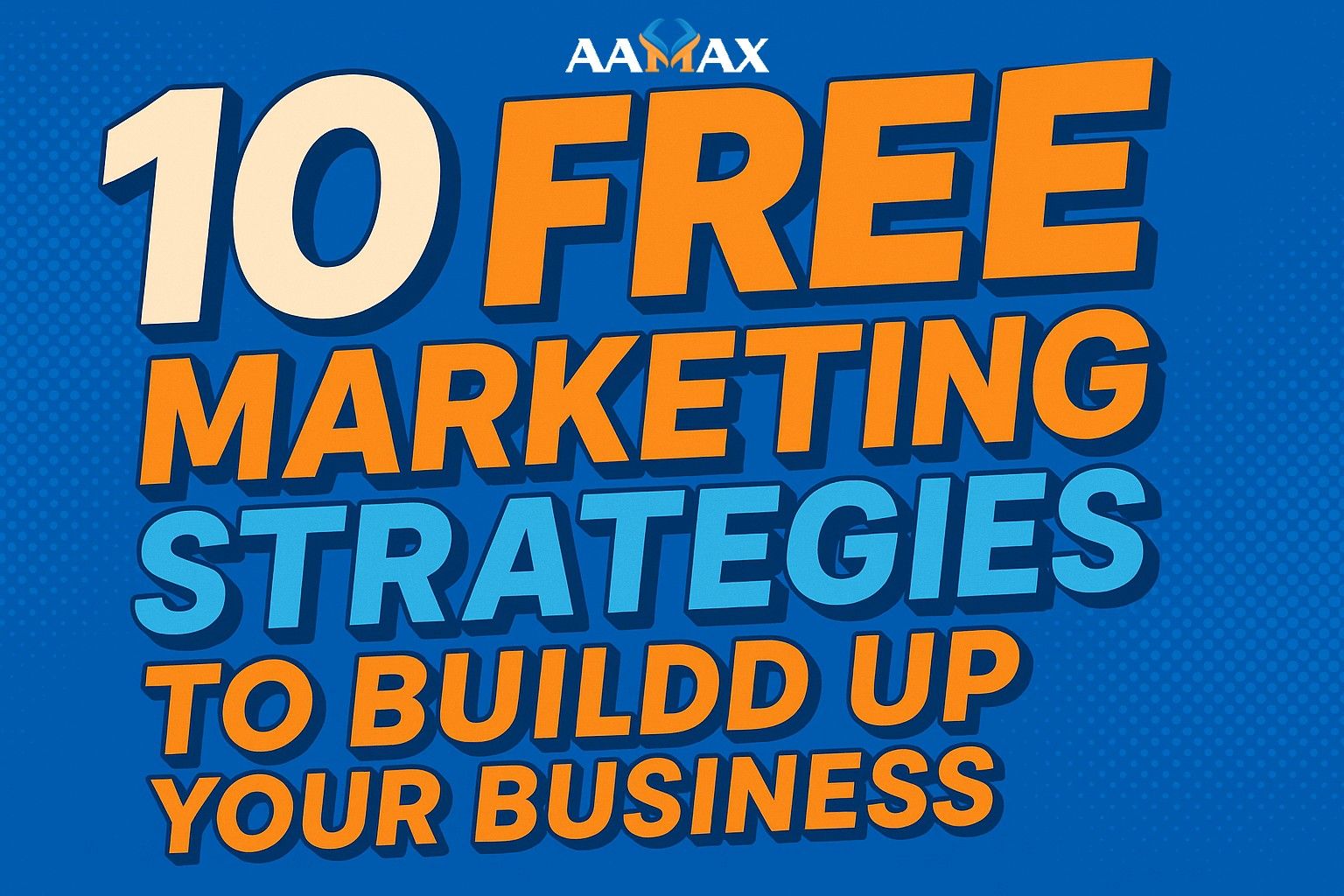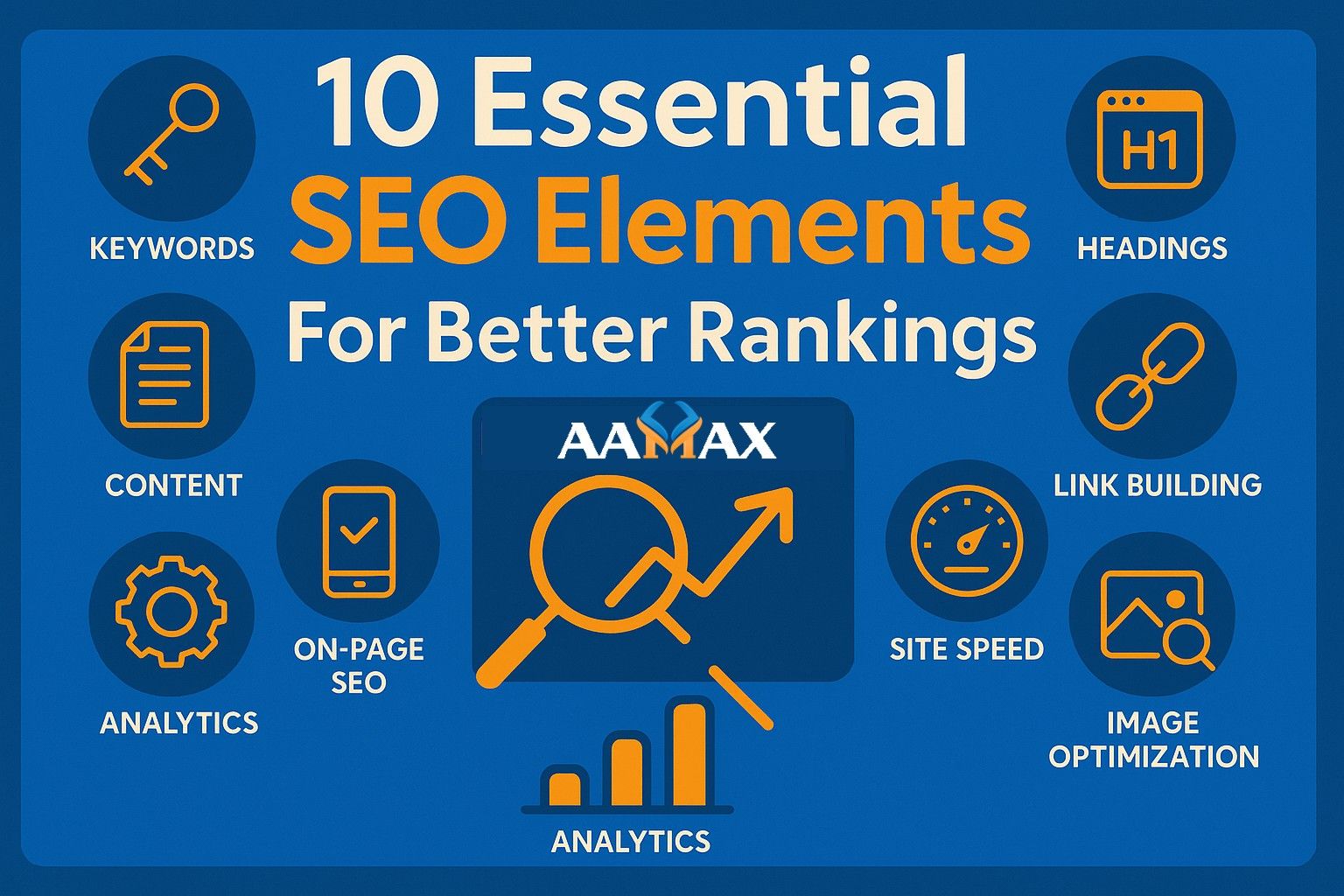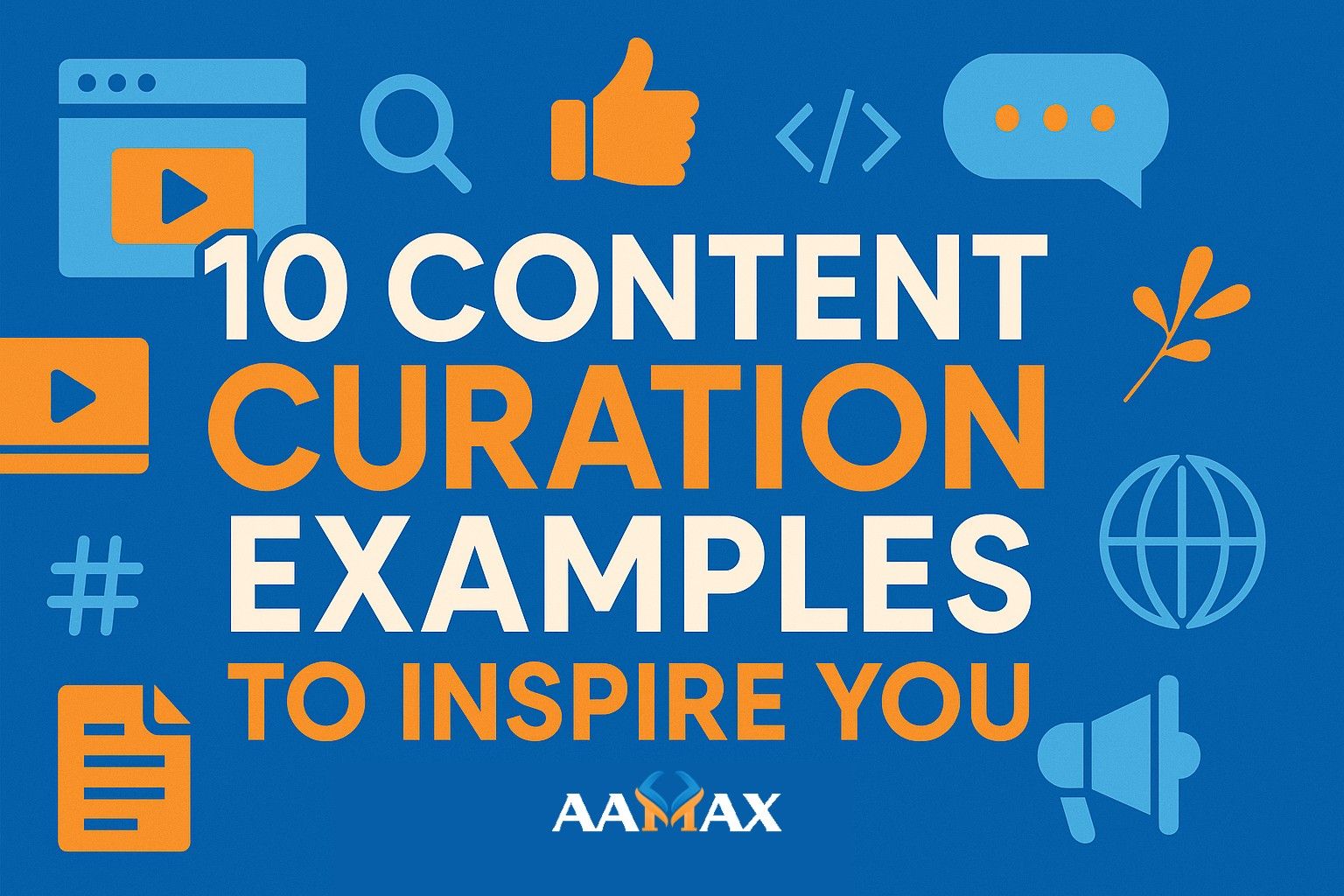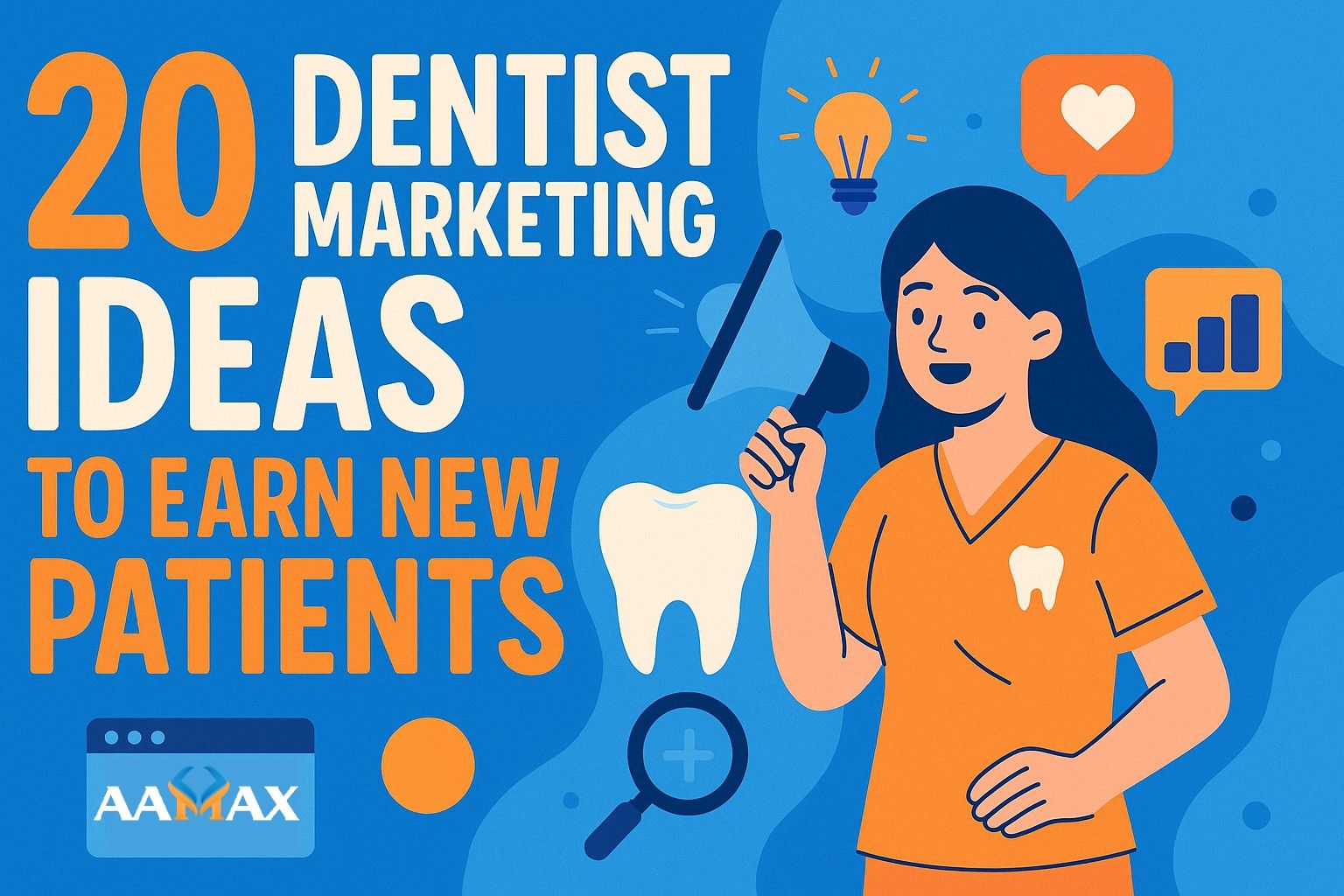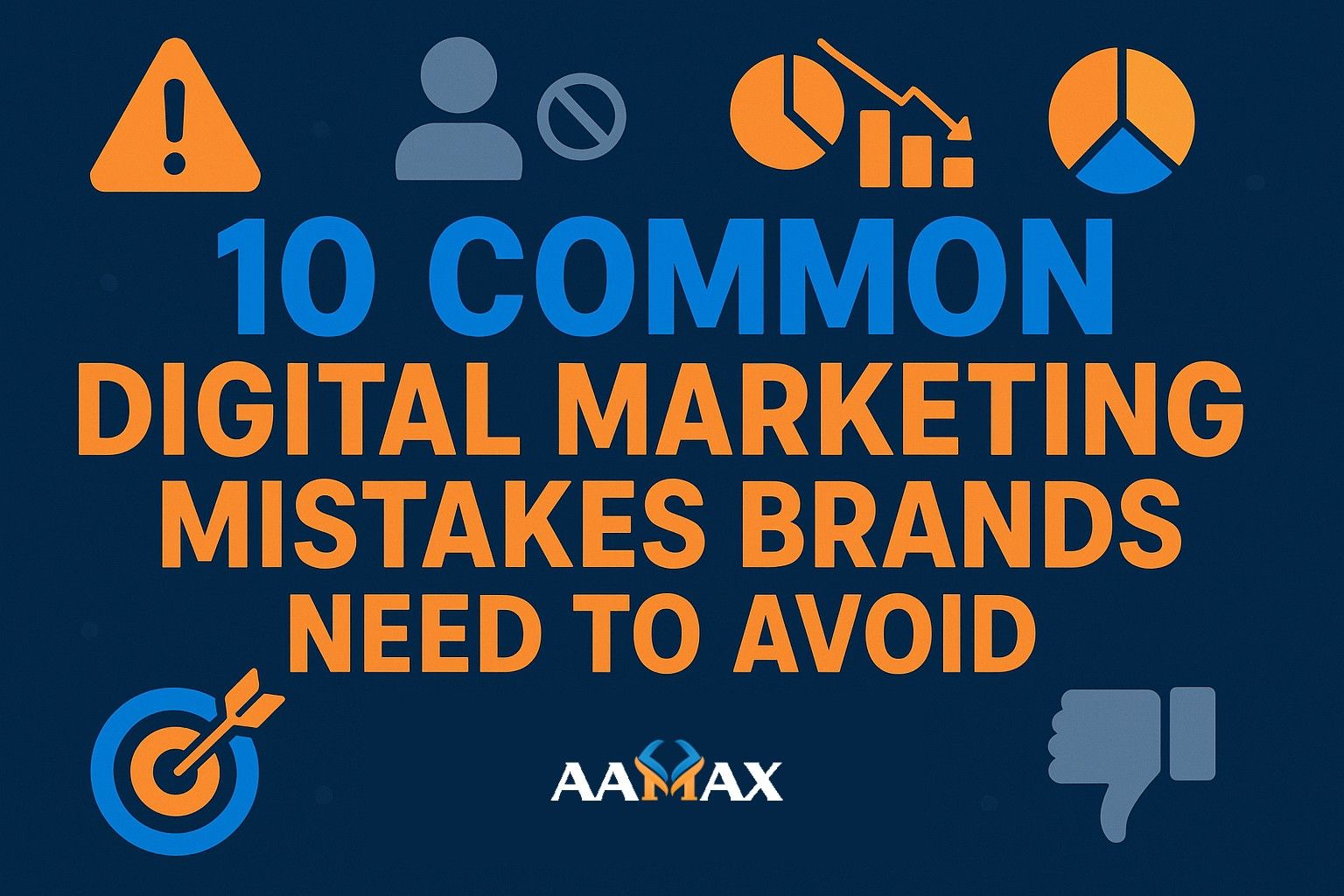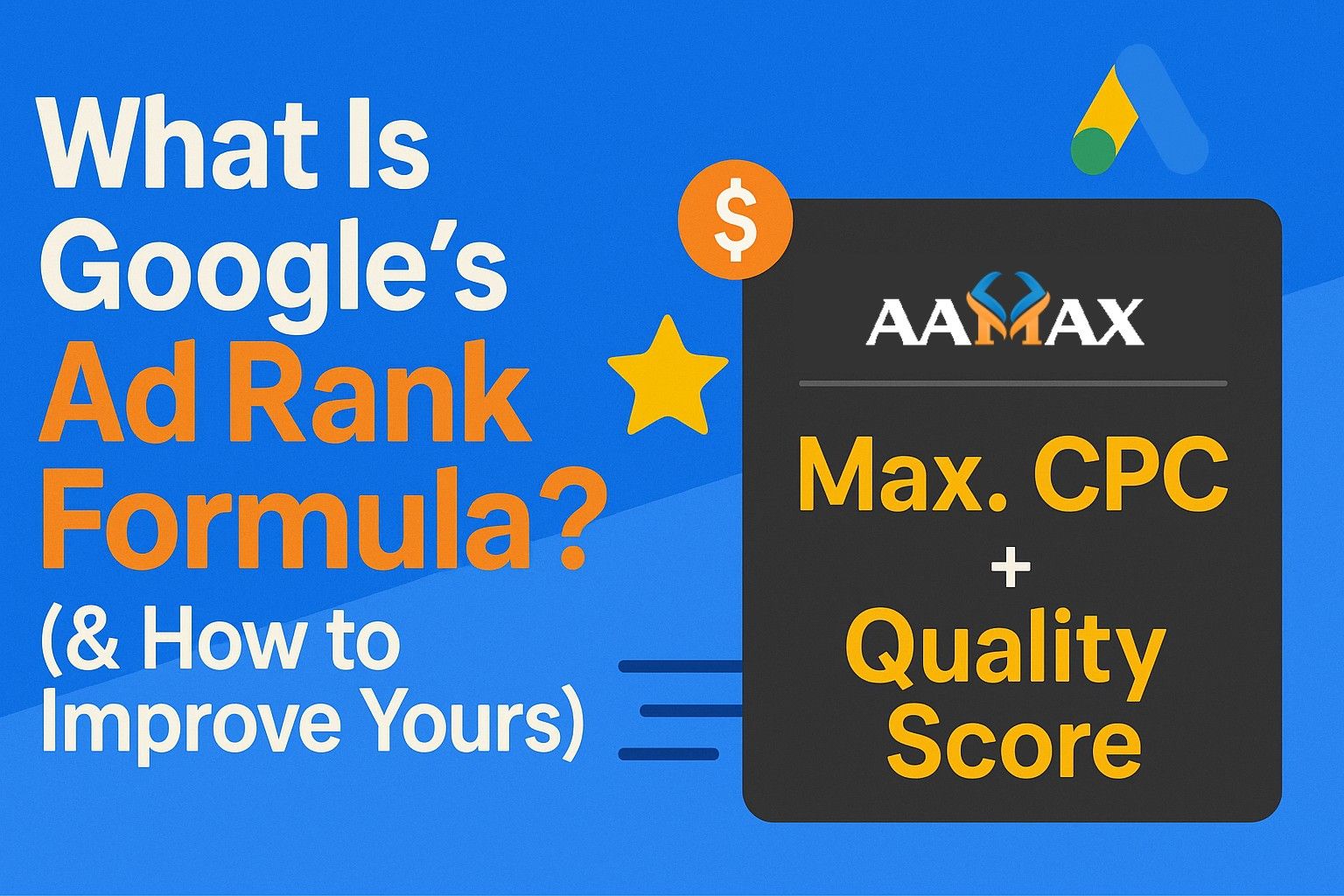
What Is Google's Ad Rank Formula? (& How to Improve Yours)
Google Ads is one of the most effective advertising platforms in the world. With billions of daily searches, businesses compete fiercely for visibility on search engine result pages (SERPs). But not every business gets the same placement. The deciding factor behind who appears on top and who struggles for visibility lies in Google’s Ad Rank formula.
In this guide, we’ll break down what Ad Rank really is, how it’s calculated, and practical strategies you can use to improve it. By the end, you’ll have a clear roadmap to increase your ad visibility, lower costs, and maximize ROI.
What Is Google’s Ad Rank?
Ad Rank is the value Google uses to determine both:
- Whether your ad is eligible to show.
- Where your ad will appear on the SERP (its ad position).
In simple terms, Ad Rank decides if your ad makes it to the auction and how high it appears compared to competitors. This is crucial because ads appearing in the top positions usually get significantly higher click-through rates (CTR) than those lower down.
For advertisers, understanding Ad Rank isn’t optional — it’s the foundation of every successful Google Ads campaign.
The Evolution of Ad Rank
Originally, Ad Rank was calculated simply by multiplying Maximum CPC bid × Quality Score. But as competition grew and user experience became central, Google updated its formula. Now, Ad Rank is influenced by multiple factors beyond just bidding power.
This ensures that businesses can’t just “buy their way” to the top but instead must focus on providing relevant and high-quality ads.
The Current Google Ad Rank Formula
Google doesn’t reveal its algorithm in exact detail, but based on official documentation, Ad Rank today is determined by six main factors:
- Bid Amount – The maximum amount you’re willing to pay for a click.
- Ad Quality (Quality Score) – How relevant and useful your ad is, measured by expected CTR, ad relevance, and landing page experience.
- Ad Rank Thresholds – Minimum quality requirements your ad must meet to be eligible for certain positions.
- Auction Competitiveness – The context of the auction, including who else is bidding and how strong their ads are.
- User’s Search Context – The intent behind the query, location, device type, and time of day.
- Ad Extensions and Formats – How effectively you use extensions (sitelinks, callouts, structured snippets, etc.) to enhance your ad.
Put together, the Ad Rank formula can be thought of as:
Ad Rank = (Bid × Quality) + Ad Extensions + Auction Context + Thresholds
While simplified, this gives a good sense of why Ad Rank is not just about money. You can have a lower bid but still win higher placement if your ad quality and relevance outperform competitors.
Why Ad Rank Matters
Ad Rank isn’t just about ad visibility — it directly impacts your costs and ROI. Here’s why:
- Higher Ad Position: Better Ad Rank often means higher ad positions, leading to more clicks and visibility.
- Lower CPC: A strong Ad Rank can reduce the amount you actually pay per click, even if you bid less than competitors.
- Improved ROI: With higher-quality ads, your conversions become more cost-effective.
- Eligibility for Extensions: Only ads with higher Ad Ranks are eligible for advanced extensions, which improve engagement.
Simply put, Ad Rank is the deciding factor between profitable campaigns and wasted ad spend.
Breaking Down the Key Ad Rank Factors
Let’s take a deeper look at the components that influence Ad Rank and how you can optimize each one.
1. Bid Amount
Your maximum CPC bid is the starting point. While higher bids can help, Google won’t let you “buy your way” to the top if your ad is low quality.
Pro Tip: Focus on balancing competitive bids with ad quality improvements.
2. Quality Score
Quality Score is Google’s rating of ad quality, measured on a scale from 1 to 10. It includes:
- Expected CTR: How likely users are to click your ad.
- Ad Relevance: How closely your ad matches the search intent.
- Landing Page Experience: How useful, relevant, and fast your landing page is.
Improving Quality Score is one of the most powerful ways to boost Ad Rank without overspending.
3. Ad Extensions & Formats
Google rewards advertisers who provide additional value through extensions like:
- Sitelinks (links to deeper pages on your site)
- Callouts (extra benefits/features)
- Structured snippets (categories or product types)
- Call extensions (phone numbers)
These make ads more engaging, leading to better CTRs and higher Ad Rank.
4. Ad Rank Thresholds
Google sets minimum quality thresholds for ads. If your ad doesn’t meet the threshold, it won’t appear in higher positions, regardless of bid.
Lesson: Mediocre ads won’t compete — optimization is essential.
5. Auction Context
Every auction is unique. Factors like competitor bids, their ad quality, and audience targeting affect your Ad Rank.
Example: A $2 bid might win in one auction but fail in another if competitors are stronger.
6. User Context
Google considers real-time signals such as:
- User’s device (mobile vs desktop)
- Location
- Time of day
- Search intent
This ensures the most relevant ads show at the right time to the right people.
How to Improve Your Ad Rank
Now that you understand the formula, let’s explore actionable strategies to improve Ad Rank.
1. Improve Quality Score
- Write highly relevant ad copy aligned with keywords.
- Use strong CTAs that encourage clicks.
- Ensure landing pages are fast, mobile-friendly, and relevant.
- Continuously A/B test ads to improve CTR.
2. Optimize Ad Extensions
- Add sitelinks to key product/service pages.
- Highlight offers or guarantees with callouts.
- Use structured snippets to showcase product categories.
- Implement call and location extensions where applicable.
3. Refine Keyword Strategy
- Conduct thorough keyword research (focus on both short-tail and long-tail).
- Group keywords tightly for specific ad groups.
- Regularly add negative keywords to avoid irrelevant clicks.
4. Bid Smartly
- Use automated bidding strategies like Target CPA or Target ROAS if they align with your goals.
- Monitor CPCs and adjust based on competition.
- Don’t rely solely on high bids — balance with quality improvements.
5. Focus on Landing Page Experience
- Ensure your page loads quickly (ideally under 3 seconds).
- Make pages mobile-friendly.
- Align page content with ad messaging for consistency.
- Use clear calls-to-action that guide users smoothly.
6. Leverage Audience Targeting
- Use remarketing lists to target previous visitors.
- Layer demographic or location targeting for precision.
- Create custom audiences to improve relevance.
Common Mistakes That Lower Ad Rank
Even experienced advertisers make errors that hurt their Ad Rank. Watch out for these pitfalls:
- Using generic ad copy that doesn’t match keywords.
- Sending traffic to irrelevant or slow landing pages.
- Ignoring negative keywords, leading to wasted spend.
- Failing to use ad extensions.
- Overbidding without improving ad quality.
The Relationship Between Ad Rank and Cost-Per-Click (CPC)
One of the biggest misconceptions is that the advertiser with the highest bid always pays the most. In reality, Ad Rank means you pay just enough to beat the competitor below you.
For example:
- If your Ad Rank wins the top spot, your CPC is calculated based on the competitor’s Ad Rank below you, divided by your Quality Score, plus $0.01.
- This means better Quality Scores can drastically lower CPC while maintaining strong positions.
Why Businesses Should Care About Ad Rank
For businesses running Google Ads, Ad Rank affects everything from visibility to cost efficiency. A strong Ad Rank means:
- More exposure for your brand.
- More qualified leads clicking your ads.
- Lower ad spend for higher returns.
- Better long-term campaign sustainability.
Ignoring Ad Rank is like ignoring the rules of the game — your campaigns will struggle no matter how much you spend.
Final Thoughts
Google’s Ad Rank formula is the key to unlocking success in paid search advertising. While bidding power matters, it’s only one piece of the puzzle. Relevance, quality, extensions, and user experience carry equal — if not greater — weight.
By focusing on improving Quality Score, optimizing ad extensions, and delivering a seamless landing page experience, you can boost your Ad Rank, reduce CPC, and maximize ROI.
And if you’re looking for expert help to elevate your digital presence, you can AAMAX — a full-service digital marketing company offering web development, SEO, and digital marketing services. With the right strategy and execution, you’ll not only improve your Ad Rank but also build a stronger foundation for long-term growth.

